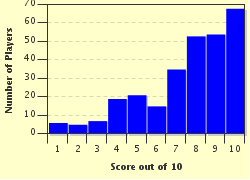Quiz Answer Key and Fun Facts
1. The tour started with breakfast, and our guide suggested we all try some WED GYM MIGHT on our toast. What iconic Aussie food was he suggesting?
2. We saw some lovely red flowers alongside the road, and were told that they were examples of the WORE RUT ARE. How should a resident of New South Wales spell the name of their state's floral emblem?
3. We saw a field of these animals, and our guide informed us that John and Elizabeth Macarthur are considered to be responsible for establishing MARRY NOSH HEAP as an important part of the Australian economy. What fleeced animal were we looking at?
4. The tour guide told us that the trees bearing these lovely globular yellow flowers are called WHAT TILL trees. How do most people spell the name of this tree, commonly found around the eastern part of Australia?
5. When the driver announced it was time to get out of our bus so we could get a good look at a CAR SEW EYRIE, I was afraid we might have to do some climbing, but we found the object of our search at ground level. What was it?
6. Another tree with yellow flowers caught our attention, and we were told that we were snapping photos of a CELL KEY YOKE. What tree was this, whose name makes it sound as if it is part of the genus Quercus?
7. Off the bus, through the gate, across a paddock, down to the edge of the river we trooped to see if we could spot the PLAIT TEA BUS that the driver assured us lived there. What were we hoping to see?
8. A visit to a botanical garden gave us a chance to see some CAN GEAR OOH PAUSE, which are found in the wild only in southwest Western Australia. What is the actual name of these plants?
9. This time, we were all invited to stay inside the bus and look out the window at the CROOKED DIAL. I was happy to keep a solid barrier between myself and what reptile?
10. It's the end of the tour, and we are all planning to celebrate with tea and a nice LAMB MEAN DUN. What Aussie treat will shortly be inside me instead of on my plate?
Source: Author
looney_tunes
This quiz was reviewed by FunTrivia editor
Tizzabelle before going online.
Any errors found in FunTrivia content are routinely corrected through our feedback system.


